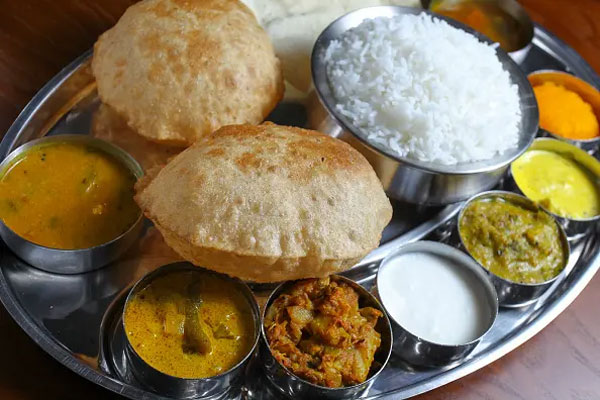Daijiworld Media Network - New Delhi
New Delhi, Aug 7: The cost of preparing home-cooked meals in India saw a notable decline in July, with vegetarian thalis becoming 14% cheaper and non-vegetarian thalis dropping 13% compared to the same period last year, according to Crisil’s monthly Food Plate Cost indicator.
This drop comes amid easing commodity prices, especially for key vegetables and poultry, which form the core of typical Indian meals.
Vegetables Lead the Price Decline
A significant factor behind the reduced cost of vegetarian meals was the sharp fall in prices of tomato, onion, and potato (TOP) — vegetables that typically see price spikes around the July-August monsoon period.

• Tomato prices fell 36% year-on-year, down to Rs 42 per kg in July from Rs 66 last year — a stark contrast to July 2023, when prices crossed Rs 100/kg.
• Onion and potato prices also declined by 36% and 30%, respectively, helped by improved production levels and a high price base in the previous year.
Crisil noted that a 18–20% increase in onion output this year and a recovery from previous blight-related losses in potato production contributed to this downward trend.
Pulses, Rice Add to the Relief
• Pulses saw a 14% year-on-year price drop, supported by robust production and healthy stock levels.
• Rice prices dipped by 4%, adding further to the affordability of vegetarian meals.
Broiler Prices Lower Non-Veg Thali Cost
For non-vegetarian thalis, the fall in cost was primarily due to a 12% drop in broiler chicken prices, which make up nearly half of a non-veg thali’s cost, combined with the overall fall in vegetable prices.
Some Cost Pressures Remain
Despite the overall relief, not all components saw price declines:
• Vegetable oil prices surged 20% year-on-year, even after the government reduced the basic customs duty (BCD) on crude edible oils. The benefits of this policy have yet to fully reach consumers.
• Additionally, a 6% hike in LPG cylinder prices over the past year dampened the overall savings on food costs.
Outlook
While the latest figures reflect a welcome dip in food inflation for consumers, experts caution that volatile monsoon patterns and global commodity trends could influence future pricing.
Nonetheless, the July data points to a broader trend of cost normalization in food staples, following last year’s inflationary pressures — a positive sign for household budgets across the country.